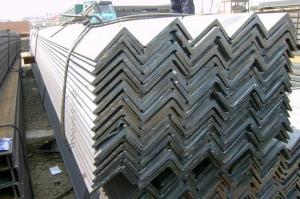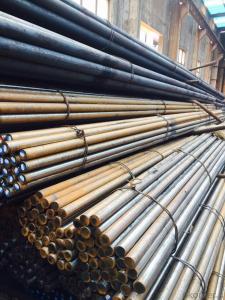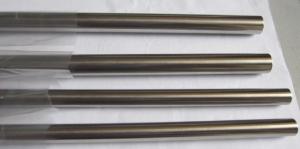Stainless Steel Bars
Stainless Steel Bars Related Searches
Best Paint For Stainless Steel Blanket Insulation For Steel Buildings Primer For Galvanized Steel Foam Filter For Stainless Steel H S Code For Stainless Steel Surface Grinding Wheels For Stainless Steel Surface Grinding Wheels For Hardened Steel Hole Saw For Stainless Steel Paint For Stainless Steel Stainless Steel For BbqHot Searches
Steel Mesh Panels For Sale Price For Stainless Steel Scrap Scrap Price For Stainless Steel Price For Stainless Steel Stainless Steel Tank For Sale Stainless Steel Sheets For Sale Cheap High Tea Sets For Sale Stainless Steel Tanks For Sale Stainless Steel For Sale High Density Fiberboard For Sale Solar Hot Water Collectors For Sale Scaffolding For Sale In Uae Scaffolding For Sale In Ireland Scaffolding For Sale In Houston Type Of Inverter For Solar Price Of Shipping Containers For Sale Types Of Inverter For Solar Stock Price For Aluminum Used Solar Inverter For Sale Steel Mesh Panels For SaleStainless Steel Bars Supplier & Manufacturer from China
Okorder.com is a professional Stainless Steel Bars supplier & manufacturer, offers integrated one-stop services including real-time quoting and online cargo tracking. We are funded by CNBM Group, a Fortune 500 enterprise and the largest Stainless Steel Bars firm in China.Hot Products
FAQ
- Yes, stainless steel pipes can be used for food processing. Stainless steel is a popular choice in the food industry due to its excellent corrosion resistance, high strength, and hygiene properties. It is non-reactive, which means it does not interact with food and does not impart any taste or odor. Stainless steel pipes are easy to clean, sanitize, and maintain, making them suitable for use in food processing applications where cleanliness and hygiene are crucial. Additionally, stainless steel pipes can withstand high temperatures and pressures, making them ideal for various food processing operations such as transportation, storage, and distribution of food products.
- Yes, stainless steel pipes are suitable for power plant systems. They offer excellent corrosion resistance, high strength, and durability, making them ideal for transporting various fluids and gases in power plant environments. Additionally, stainless steel pipes can withstand high temperatures and pressures, ensuring reliable and efficient operations in power generation facilities.
- Yes, stainless steel pipes are suitable for drinking water applications. Stainless steel is highly resistant to corrosion, which ensures the water remains free from contaminants. It also has a smooth surface that prevents the accumulation of bacteria or impurities, making it a safe and hygienic choice for transporting drinking water.
- Certainly, underground sewage systems benefit greatly from the use of stainless steel pipes. Renowned for their resilience, robustness, and resistance to corrosion, stainless steel pipes prove to be an optimal selection for subterranean applications. With an extended lifespan, they can endure the demanding circumstances commonly encountered in sewage systems, such as exposure to moisture, chemicals, and fluctuating temperatures. Furthermore, the smooth interior surface of stainless steel pipes serves to prevent the accumulation of debris or waste, effectively decreasing the likelihood of clogs or obstructions. In summary, stainless steel pipes present a dependable and enduring solution for underground sewage systems.
- Stainless steel pipes and copper pipes are both widely utilized in various applications, yet they possess distinct characteristics that differentiate them. The resistance to corrosion is one of the primary distinctions between stainless steel pipes and copper pipes. Stainless steel pipes exhibit exceptional corrosion resistance, rendering them suitable for environments with high humidity or chemical exposure. Conversely, copper pipes also possess corrosion resistance, albeit not to the same degree as stainless steel. They may gradually corrode when subjected to specific chemicals or acidic conditions. Cost is another aspect to consider. Copper pipes generally carry a higher price tag than stainless steel pipes. However, copper is an exceedingly efficient conductor of heat and electricity, making it a preferred option for heat transfer applications like plumbing and HVAC systems. Stainless steel pipes also exhibit good conductivity but are generally less expensive than copper pipes, making them a cost-effective alternative in many cases. Regarding durability, stainless steel pipes are renowned for their strength and ability to withstand high pressures, rendering them suitable for industrial applications and underground installations. Although copper pipes are also durable, they may be more susceptible to damage in extreme conditions or under excessive pressure. Ease of installation is another factor to take into account. Copper pipes are relatively easy to work with due to their malleability, enabling simple bending and shaping. Conversely, stainless steel pipes tend to be harder and necessitate specialized tools for cutting and bending. In conclusion, stainless steel pipes provide superior corrosion resistance, cost-effectiveness, and are ideal for high-pressure applications. On the other hand, copper pipes possess excellent heat transfer properties and are more malleable, making them suitable for plumbing and HVAC systems. Ultimately, the choice between stainless steel and copper pipes depends on the specific requirements of the application and budget constraints.
- Yes, stainless steel pipes are suitable for underground installations. Stainless steel is highly resistant to corrosion and can withstand harsh underground conditions such as moisture, soil chemicals, and temperature variations. Additionally, stainless steel pipes have high strength and durability, making them a reliable choice for underground applications.
- Stainless steel pipes are indeed appropriate for wastewater treatment ponds. Due to their exceptional resistance to corrosion, stainless steel proves to be an ideal material for managing wastewater, which can be incredibly corrosive. The robustness and sturdiness of stainless steel pipes enable them to endure the severe conditions and chemicals present in wastewater treatment ponds. Furthermore, stainless steel pipes are effortless to clean and upkeep, guaranteeing the efficacy and efficiency of wastewater treatment procedures. All things considered, stainless steel pipes emerge as a dependable and enduring alternative for wastewater treatment ponds.
- The composition of 904L and 316L stainless steel pipes sets them apart. 904L contains higher amounts of chromium, nickel, and molybdenum compared to 316L. Specifically, 904L has about 25% nickel and 4.5% molybdenum, while 316L contains approximately 10-14% nickel and 2-3% molybdenum. In terms of corrosion resistance, 904L stainless steel pipes outperform 316L due to their higher chromium, nickel, and molybdenum content. The increased alloying elements make 904L more resistant to localized corrosion, such as pitting and crevice corrosion, particularly in aggressive environments like seawater and acidic conditions. When it comes to strength and toughness, 904L stainless steel pipes have the upper hand over 316L. This makes them more suitable for applications requiring greater mechanical properties, like high-pressure and high-temperature environments. In terms of cost, 904L stainless steel is generally pricier than 316L due to its higher alloying elements. The increased cost is mainly due to the higher nickel and molybdenum content, which are more expensive metals. 316L stainless steel pipes find common usage in various industries, such as food processing, chemical processing, and pharmaceuticals, where corrosion resistance and good mechanical properties are crucial. On the other hand, 904L stainless steel pipes are primarily utilized in highly corrosive environments like offshore platforms, petrochemical plants, and desalination plants, thanks to their exceptional corrosion resistance. In summary, the main distinctions between 904L and 316L stainless steel pipes lie in their composition, corrosion resistance, strength, cost, and applications. While 316L is suitable for general-purpose applications, 904L is preferred in more demanding and corrosive environments.













































